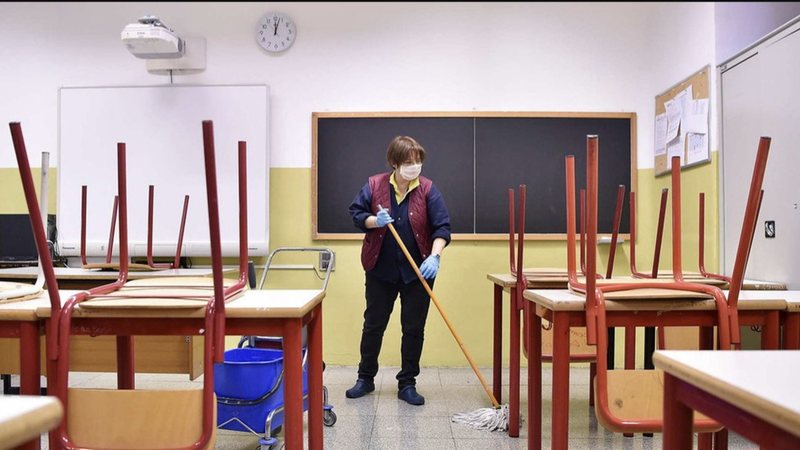
Worrying figure, the number of students in Albanian education drops by 10 percent


The number of students in schools is declining, due to the decrease in birth rates and immigration, but after the pandemic the phenomenon is worsening. Official INSTAT data show that for the period 2020-2025 the total number of students enrolled at all levels has decreased by about 61 thousand, which constitutes a contraction of 10%.
At the lowest levels of education, namely kindergartens, the number of children enrolled has decreased by 8%, from 71,332 in 2020 to 65,914 children in the last year. This phenomenon is an indicator of the strong demographic transition with the decrease in birth rates below 1.5 children per woman in the last decade, compared to the 1990s, when this indicator was over three children per woman.
Primary education and upper basic education (grades 5-9) have experienced the most pronounced decline. In primary schools, the number of students has decreased by 14% between 2020 and 2025, while in upper basic education, the decline is 11%. This indicates a continuing demographic trend of shrinking school population in the 6-14 age group.
The situation is even more worrying in secondary education, where the number of students has fallen by 17% over the period in question. During these years, enrollments in gymnasiums and vocational schools have suffered a 19% decline, reflecting a departure of young people either from this stage of education or an orientation towards the labor market. Vocational education has also marked a decrease of 11%, but this is less compared to gymnasiums.
In marked contrast to previous declines, higher education remains remarkably stable. The number of students enrolled in universities and other higher education institutions has only slightly decreased by 1%, from 123,797 in 2020 to 122,613 students in 2025. This shows that, despite demographic and social challenges, interest in university studies remains stable in Albania.
The rapid decline in the number of students has led to the closure of a quarter of 9-year schools nationwide, according to official data from the Ministry of Education.
From the 2012-2013 school year to the 2021-2022 school year, 295 9-year schools have been closed across the country, bringing their total number to 1051 from 1346 in 2013.
The closure of schools has come in direct proportion to the decline in students, as from 2011 to 2023, INSTAT reports that the number of students in 9-year education has decreased by about 30%.
Rural areas are leading the way in school closures, as the number of children has decreased significantly. However, the closure of schools in rural areas of the country has become a cause for further emigration of those few families with young children.
Since 2000, 42% of 8-9-year schools nationwide have been closed.
Albania financed more than 4-5% of its GDP before the 1990s for the education sector, a level comparable to the funding that other OECD countries provided at that time.
But during the transition years, the sector was financed with less than 3% of GDP, a level almost 40% lower than the financing that developed countries provided during this period and 20% less than the financing provided by countries in the region./MONITOR

The Ukraine summit that ignored the tough questions
ideas
top
Alfa recipes
TRENDING 
services
- POLICE129
- STREET POLICE126
- AMBULANCE112
- FIREFIGHTER128



























